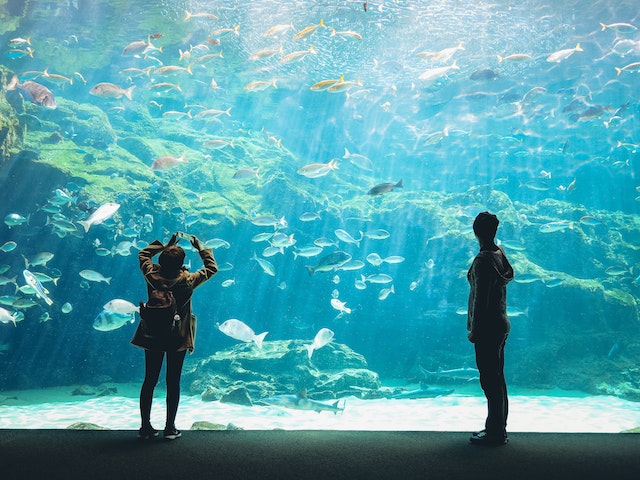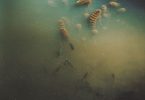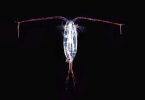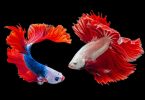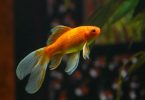Table of Contents
In the fascinating world of aquariums, where marine life thrives and captures the imagination of visitors, there comes a moment that is less cheerful but equally important to address – what do aquariums do with dead animals? The passing of an aquarium animal is a natural occurrence, and it is essential for these institutions to handle it with care and respect.
In this article, we will delve into the various ways aquariums handle the inevitable event of animal death, considering both natural causes and other factors that may contribute to it.
Understanding Aquarium Animal Death
While aquariums strive to create a safe and nurturing environment for their inhabitants, death is an inherent part of life. The lifespan of aquatic animals can vary significantly depending on the species, with some living only a few years and others, like certain species of sharks, living for decades.
Despite the best efforts of aquarium staff to provide a healthy and stress-free habitat, there are several factors that can contribute to an animal’s passing.
Natural Causes
In many cases, the death of an aquarium animal occurs due to natural causes. These animals, like any other living beings, have life spans, and once they reach the end of their natural life cycle, their bodies gradually weaken, leading to their passing.
Aquariums usually closely monitor the health and behavior of their animals, which helps them identify any signs of aging or declining health.
When a natural death occurs, aquarium staff takes great care in handling the deceased animal. Most aquariums have protocols in place to remove the animal from the exhibit discreetly and respectfully, without causing distress to other animals or visitors.
The animal’s body is then carefully examined to determine the cause of death, which is crucial for continuous improvement in animal care and wellbeing.
Disease and Infection
Another factor that can contribute to animal mortality in aquariums is the outbreak of diseases or infections. Despite strict quarantine measures and health screenings before introducing new animals to an exhibit, pathogens can still find their way in.
When an animal shows signs of illness, aquarium staff take immediate action to isolate the affected individual to prevent the spread of the disease.
In cases where an animal succumbs to a disease or infection, aquariums work closely with veterinary experts to perform post-mortem examinations and identify the cause of the illness.
This information helps aquariums refine their quarantine procedures and enhance the overall health management of their animals.
Accidents and Injuries
Accidents and injuries can also occur in an aquarium setting, just as they do in the wild. Despite the controlled environment, animals can sometimes engage in aggressive behavior or display unexpected actions, leading to injuries or even fatalities. Additionally, human errors or equipment malfunctions might inadvertently cause harm to the animals.
In such instances, aquarium staff act promptly to address any safety concerns and provide immediate medical attention to injured animals. Unfortunately, in some cases, the injuries may be severe enough to result in the death of the animal.
When this happens, aquariums conduct thorough investigations to determine the root cause of the accident and implement measures to prevent similar incidents in the future.
Immediate Response to Death
When an aquarium staff member discovers a deceased animal, it triggers a swift and compassionate response. The welfare of all animals in the aquarium is of utmost concern, so the team acts promptly to handle the situation with care and sensitivity.
Isolation of Deceased Animal
The first step taken is to carefully remove the deceased animal from the exhibit. This task is performed delicately, ensuring the animal is treated with respect and dignity.
The isolation of the deceased animal is crucial to prevent any potential health risks to the remaining inhabitants of the exhibit.
Health Check for Other Animals
Upon the removal of the deceased animal, the aquarium staff carries out a thorough health check on the other aquatic residents in the exhibit. This precautionary measure aims to identify any signs of illness or distress among the living animals.
By promptly detecting any health issues, the aquarium team can take appropriate actions to safeguard the well-being of the surviving marine life.
Post-Mortem Procedures
Necropsy
After the immediate response and the isolation of the deceased animal, aquariums often conduct a necropsy. Similar to a human autopsy, a necropsy is a detailed examination of the deceased animal’s body to determine the cause of death.
This procedure is carried out by trained veterinarians and pathologists who meticulously analyze tissues, organs, and other relevant samples.
Cause of Death Determination
The primary objective of a necropsy is to ascertain the cause of death. Understanding why an animal passed away is crucial in evaluating the overall health and well-being of the aquarium’s inhabitants.
Identifying potential diseases, environmental concerns, or other factors that led to the animal’s death allows aquariums to take appropriate steps to prevent similar occurrences in the future.
What Happens Next?
Once the cause of death is determined and the post-mortem procedures are complete, aquariums have several thoughtful options for handling the remains of the deceased animal.
These options vary based on factors such as the animal’s size, the availability of resources, and the aquarium’s ethical considerations.
Respectful Burial or Cremation
In some cases, aquariums choose to conduct a private and respectful burial or cremation for the deceased animal. This dignified farewell ensures that the animal’s remains are handled with care and sensitivity.
Education and Research
Aquariums are not only places of entertainment but also centers of education and research. In certain instances, the remains of a deceased animal may be used for educational purposes.
This may involve studying the animal’s anatomy, conducting research on specific species, or even providing an opportunity for veterinary students to learn more about marine life.
Contributions to Conservation Efforts
Some aquariums partner with research institutions or conservation organizations to make valuable contributions to ongoing efforts to protect marine life.
The remains of deceased animals can provide essential insights into the health and challenges faced by certain species, helping researchers and conservationists develop better strategies for their preservation.
Natural Decomposition
For aquatic animals in aquariums with large exhibits and naturalistic settings, natural decomposition can be an option. This process allows the remains to break down naturally within the exhibit, simulating a natural ecological cycle.
Animal Disposal Companies In cases where other options are not feasible, aquariums may work with specialized animal disposal companies that are experienced in handling deceased animals. These companies ensure that the remains are disposed of responsibly and in accordance with local regulations.
Preventive Measures
Just like in any living environment, the well-being of the aquatic inhabitants is of utmost importance in an aquarium. Aquarium staff and caretakers work tirelessly to ensure that the animals are provided with the best possible living conditions.
This includes maintaining optimal water quality, monitoring temperature, salinity, and oxygen levels, as well as creating enriching environments that mimic their natural habitats.
However, despite all the dedicated efforts, animals in the aquarium may sometimes fall ill or experience age-related issues, leading to unfortunate outcomes.
But aquariums are well-prepared for such situations and have measures in place to deal with them compassionately and responsibly.
Regular Health Assessments
To ensure the overall health and well-being of their aquatic residents, aquariums conduct regular health assessments. These assessments involve close observation of animal behavior, physical examinations, and monitoring vital signs.
Trained veterinarians and animal care specialists play a crucial role in detecting any signs of illness or distress early on.
When an animal shows signs of health decline, aquarium staff intervene swiftly to provide appropriate medical attention.
They might administer medication, adjust the water conditions, or implement specialized care plans. The goal is to nurse the animal back to health and prevent any further suffering.
Proper Nutrition
A well-balanced and nutritious diet is fundamental to the health of the animals in an aquarium. Caretakers meticulously plan the diets of each species, taking into account their specific dietary requirements. From tiny plankton to larger fish and mammals, every individual’s nutritional needs are catered to.
Despite such careful planning, some animals may face challenges in adapting to the diet or may have difficulty feeding due to age or other factors.
In such cases, the aquarium staff employs various methods to encourage feeding or provide alternative ways to meet their dietary needs.
Appropriate Habitat Maintenance
Maintaining a healthy and clean environment is vital for the overall well-being of the aquatic residents. Regular cleaning of tanks, filters, and life-support systems ensures that the water quality remains pristine.
Additionally, proper habitat maintenance includes managing the right balance of flora and fauna within the exhibit, creating a harmonious ecosystem.
The careful attention to habitat maintenance extends even after the passing of an animal. When a death occurs, it is essential to assess if any specific environmental factors might have contributed to the incident. This information is valuable for ongoing improvements in care and well-being of the remaining animals.
Concluding Thoughts
In conclusion, the way aquariums handle deceased animals is a reflection of their commitment to animal care and respect for the circle of life. By following proper protocols and conducting post-mortem procedures, they gain valuable insights to prevent similar incidents in the future.
Additionally, through various preventive measures, aquariums strive to provide the best possible care for their marine inhabitants, ensuring a safe and healthy environment for all.
As visitors, we can appreciate the efforts and dedication of these institutions in maintaining the beauty and wonder of marine life while honoring the natural course of life and death.

